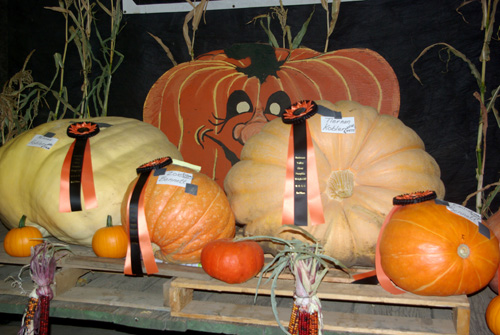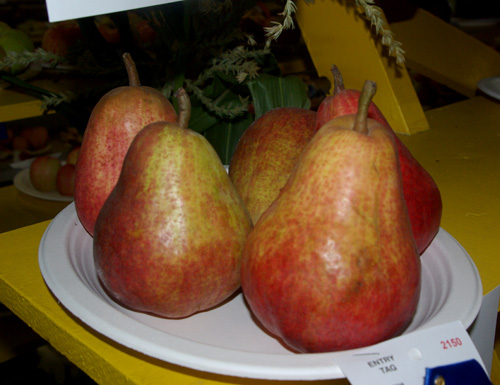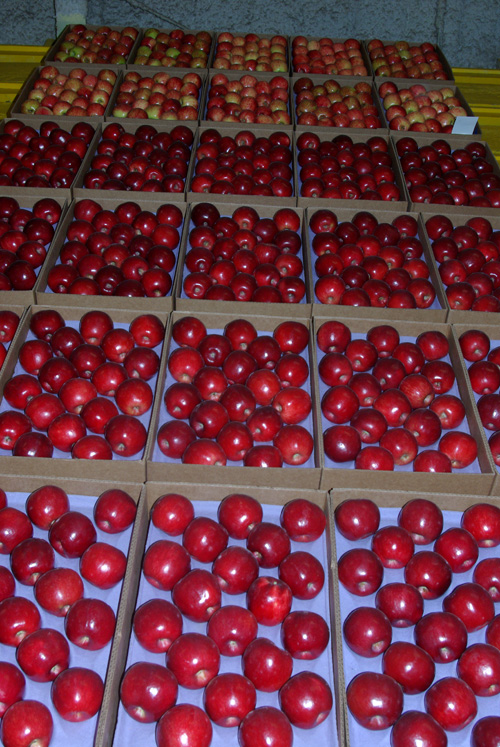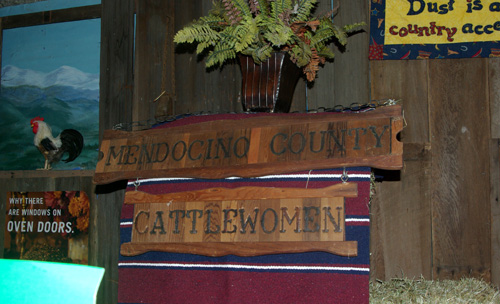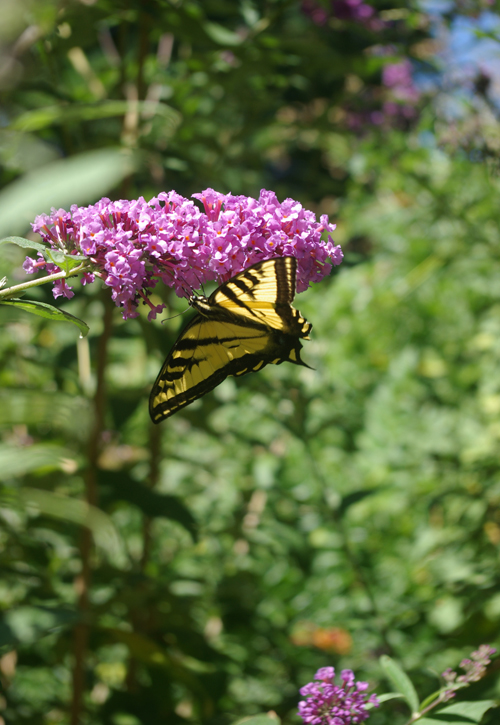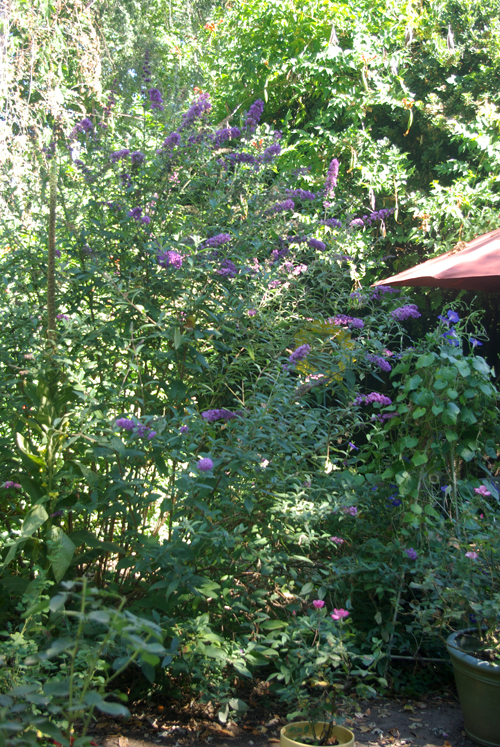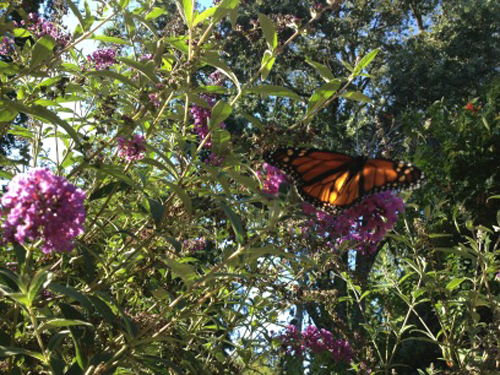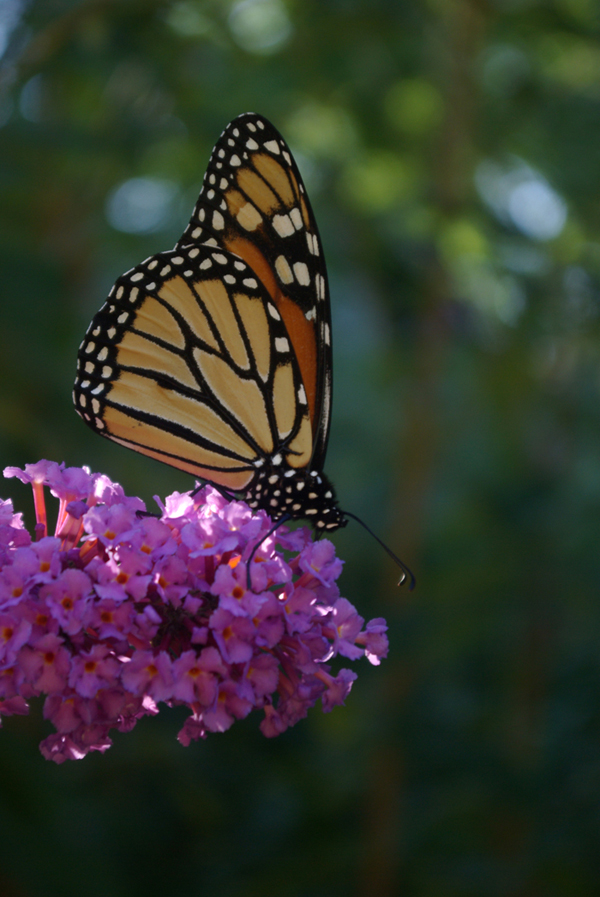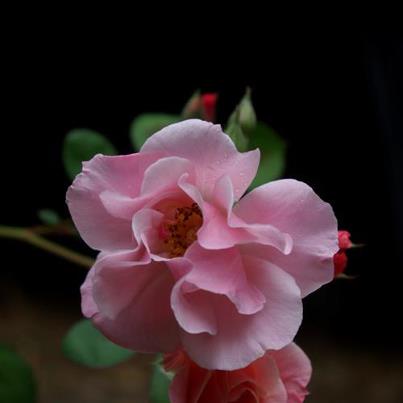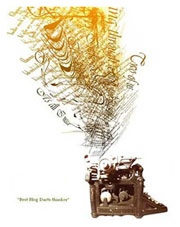A fair (archaic: fayre) is a gathering of people to display or trade produce or other goods, to parade or display animals and often to enjoy associated carnival or funfair entertainment.
Strangely, in spite of putting up posters, tweeting and Facebooking the Heirloom Expo in Santa Rosa, perhaps due to their midweek scheduling, I passed up the opportunity to head south, and instead opted for going over the hill to the local county fair. I wanted to experience a real county fair, replete with corndogs, and cotton candy, (not that I would actually eat any of it), blue ribbons and apples pies. Probably the biggest draw, however, was knowing there was a Border Collie trial going on and I had not been in some years. So off I went in the early morning sun through the woods and into the tiny town of Boonville (and all that name engenders). I somehow had not anticipated that Parking Was an Issue, and opted not to view it as such, merely as a small challenge, and opportunity, to look up and down all the side streets I’m normally too busy to venture down, until I encountered a small road several blocks from the fairgrounds. I drove to the very end where a Hispanic woman was chatting in her small garden, abundantly blessed with enormous dahlias, and parked off the road. It didn’t take too very long to walk back to the fairgrounds, and I happily snapped this wayward trumpet vine on my way.
Boonville is situated in Anderson Valley, the heart of winecountry. It is a mix of salt of the Earth folk, winegrowers, applegrowers, many Hispanics probably drawn to winery work (guessing) and a small tourist industry, as people must pass through Boonville to get to the coast, where tourists increasingly abound. It is very quiet and one is not allowed to go faster than 30 mph. Let’s just say it has a lot of character.
The finding of the parking spot ate into my dogtrial time, so I arrived when there were only two more dogs to run. If you’ve never been to a Border Collie trial, go here.
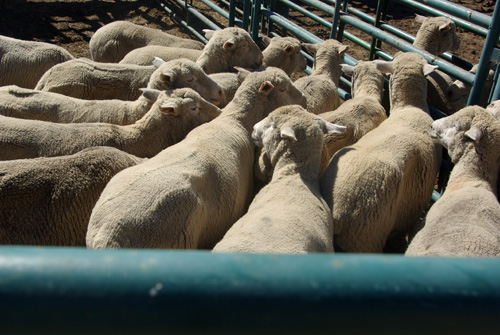
Sheep waiting for dog trial
What ensued when the next dog up was set to begin I’ve never seen before. The handler lost control of the dog. The sheep people lost control of the sheep. And the dog set upon two of them, nipping at their chests. I guess it happens, but it was a new experience for me, and rather disconcerting.
The last dog was also a surprise. He and the sheep were deadlocked in moving them through the various gates so it was like watching a sheepdog trial in slow motion.
I decided I’d not come for the dog trials afterall, and allowed myself to be swept into the crowds and see what else the fair held for me. 🙂
Within minutes I found myself standing before the merry-go-round, instantly enchanted.
I next entered a large building where farmers had been displaying their vegetables and fruits and awards had been given. It was fun to see red and blue ribbons on their displays, knowing they must have been very proud of their hard work.
And then there were the apples! What do you think of this arrangement? I honestly have a mixed reaction. Part of me is in awe of the work that went into this creation. I am made keenly aware of the industrialization of our food production, which is both admirable and somewhat jarring. We have learned to feed large numbers of people. A Good Thing. And now it seems we’d best retrace our steps and examine those very practices to ensure our own health. Ironic, right?
Elkanah Watson, a New England patriot and farmer, earned the title, “Father of US agricultural fairs” by organizing the Berkshire Agricultural Society and creating an event (known then as a Cattle Show) in Pittsfield, Massachusetts in September 1811. It was more than just an exhibit of animals – it was a competition, with prize money ($70) paid for the best exhibits of oxen, cattle, swine and sheep. Watson worked diligently for many years helping communities organize their own agricultural societies and their respective shows (fairs). By 1819 most counties in New England had organized their own agricultural societies and the movement was spreading into the other states. The nineteenth century closed with almost every state and province having one or more agricultural fair or exhibition.
In addition to the fruits and vegetables on display, along the sides of the room were various displays, some with historical interests. I loved the wheel. It made me wonder where it had been, what stories it might tell. I’m sure they are work stories.
And this wagon surely has been privy to many conversations.
This sign caught my attention. These are not women I know. But I found myself wondering about them. I might look them up!
And in the far corner were the Master Gardeners. As it happened they needed a shot of their display, so I happily obliged. I spent some time talking to them and discovered a new Master Gardener program is starting up in winter, very conveniently not so far away. I decided this was why I’d really come to the fair. Thank you, Inner Guidance. 🙂
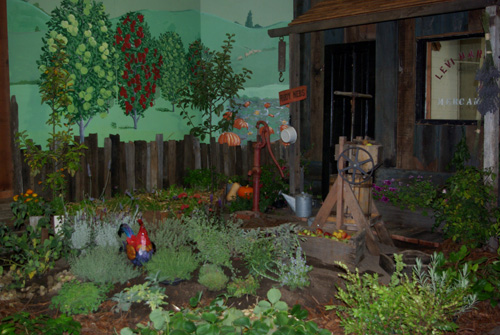
I left this building, then, and wandered over to the Wool Barn. I’d never been to this kind of event before. This angora rabbit immediately caught my attention, as he was being shorn! I talked with the man cutting his fur and learned that angora also comes from goats. Maybe you knew that?
There were tables laden with kinds of wool.
And stalls full of incredibly beautiful yarns. I could see there must be women (or men?) who just live for this, to secure these beautiful materials for their winter creations. A winter of weaving, of knitting, of crocheting. It’s lovely to contemplate.
I was not drawn to purchasing yarns, but I certainly was drawn to buying this beautiful green wool hat, which came up from Morro Bay! I am very much looking forward to wearing it soon as mornings inevitably become quite chilly!
American, Canadian, and UK readers: to find a fair in your state, check out this link! http://www.fairseverywhere.com/
I find myself wondering if county fairs are on the wane, or will always be a mainstay of our lives. I believe they will increasingly be venues where we might examine how we are conducting our food production, and how we might aim ourselves for more sustainable living. Do you attend your local county fairs? What changes have you seen and how might what you have learned impact their evolution?
Love and gardening blessings,
Kathryn xoxo
Footnote: Since posting this blog post I have crossed paths with three women who were in full attendance at the dog trials and every one of them said the same thing: “It was the sheep!” Apparently what I missed in arriving late was that not a single dog was able to maneuver the sheep through the various gates or pens. These sheep had had no experience with being herded and they cooperated with not even the most skilled of dogs! Bet I’ll be hearing more about this. 🙂
Book News: Please watch for upcoming review of Plant Whatever Brings You Joy on examiner.com and an excerpt from my book in the winter issue of The Intelligent Optimist (formerly known as Ode Magazine).
The list of bookstores carrying Plant Whatever Brings You Joy continues to grow! If you do not see a bookstore near you please consider purchasing directly. Priority shipping within US is free, as is giftwrapping! 🙂
Posted on September 17th, 2012 by Kathryn
Filed under: Field Trips | 6 Comments »

